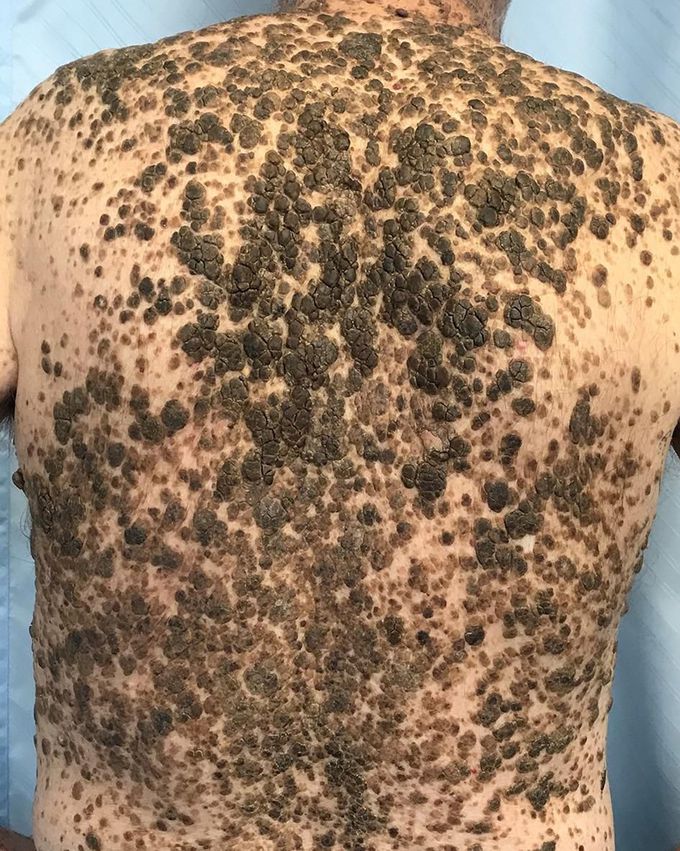


Leser-Trélat Sign
Leser-Trélat sign is a skin disorder characterised by the abrupt appearance of multiple seborrhoeic keratoses that rapidly increase in their size and number. It is caused by an associated cancer and is often accompanied with malignant acanthosis nigricans. The sign of Leser-Trélat is mostly associated with an adenocarcinoma of the stomach or colon. There is much debate about the validity of the sign of Leser-Trélat as a true paraneoplastic syndrome. Because seborrhoeic keratoses and cancer are both statistically more common in elderly people it is difficult to ascertain whether the keratoses is due to the cancer or is a condition in its own right. The lesions are brown warty nodules that have a stuck-on appearance. They tend to increase in size and number over time and they may be pruritic. Since the lesions are harmless, they do not require any specific treatment. However, it is essential to treat the underlying cancer and doing that also leads to the skin lesions being resolved. Image source: https://www.bmj.com/content/374/bmj.n1966

